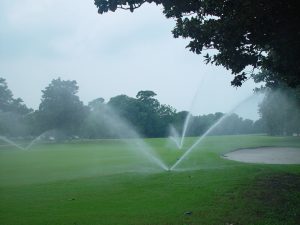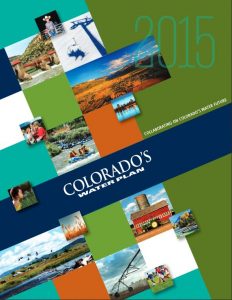 In 1999 the Colorado Legislative Council published an Issue Brief entitled Finding Water for One Million New Residents. It reported that in 20 years the population of the Northern Front Range – including the counties of Adams, Arapahoe, Denver, Douglas, Jefferson, and Larimer – would grow to 3.5 million people, and that one of the major issues associated with this population growth would be how to supply water to all the new people moving in.
In 1999 the Colorado Legislative Council published an Issue Brief entitled Finding Water for One Million New Residents. It reported that in 20 years the population of the Northern Front Range – including the counties of Adams, Arapahoe, Denver, Douglas, Jefferson, and Larimer – would grow to 3.5 million people, and that one of the major issues associated with this population growth would be how to supply water to all the new people moving in.
So before we get to the water issue, let’s take a look at the population figures. Were the 1999 predictions accurate? Using population figures from the State Demography Office, we can see that in 1999 the combined population of those six counties was 2,311,420, and their combined population in 2016 (the most recent year available) was 3,066,923 – a difference of 755,503. Not quite a million. However, given the intense growth that has happened since 2016, if we look at the Demography Office’s projected populations for those counties in 2019 – the 20 years since publication of the Issue Brief – the six counties’ combined population is expected to be around 3,217,133. That’s 905,713 more people in the Front Range than in 1999. And if we count Boulder and Broomfield counties into the mix – which were not counted in the 1999 report, but today considered by most to be a part of the Front Range – we’re definitely on track to have a million new residents between 1999 and 2019.
Now to the water issue. David Beaujon writes in the 1999 Issue Brief that “of Colorado’s seven river basins, only the Colorado River Basin has a significant amount of surplus water that could be developed for use in the Denver metropolitan area,” but cites possible federal policy changes, water projects, and transbasin diversions as potential challenges to obtaining this water. Another possible source, the Denver Basin Aquifer, “offers protection against extended droughts and a temporary water supply for rapidly growing municipalities until other supplies can be developed.” However, water in the aquifer “is essentially nonrenewable, and well pumping can exceed the natural rate of recharge from rain and snow, which is often less than an inch per year,” cautions Beaujon. Finally, other options are discussed, such as water reuse and transfers of agricultural water rights. Both of these options, however, present challenges to the agricultural economy, either by reducing the amount of lands under irrigation, or by reducing streamflow, explains the Brief.
 So how has the state dealt with these challenges since 1999, and what does the future hold? In 2015, the state issued its official Water Plan. The nearly 600-page document (which you can also check out in print from our library if your eyes can’t take that much screen reading) discusses the supply and demand challenges for each of Colorado’s seven basins and how the state is planning to address future need.
So how has the state dealt with these challenges since 1999, and what does the future hold? In 2015, the state issued its official Water Plan. The nearly 600-page document (which you can also check out in print from our library if your eyes can’t take that much screen reading) discusses the supply and demand challenges for each of Colorado’s seven basins and how the state is planning to address future need.
Here are some other helpful publications that address the issues of water supply and population growth in the Front Range:
- Agricultural/Urban/Environmental Water Sharing: Innovative Strategies for the Colorado River Basin and the West. Colorado Water Institute (Colorado State University), 2011.
- Agricultural Water Conservation in the Colorado River Basin. Colorado Water Institute (Colorado State University), 2017.
- Citizen’s Guide to Where Your Water Comes From. Colorado Foundation for Water Education, 2005.
- Colorado Climate Plan. Colorado Water Conservation Board, 2018. Includes chapter on water supply and demand.
- Colorado River Main Stem Drought & Water Supply Assessment Basin Summary. Colorado Water Conservation Board, 2006.
- Colorado River Water Availability Study Phase I Report. Colorado Water Conservation Board, 2012.
- Colorado Water Supply Conditions Update. Colorado Division of Water Resources. Published monthly April 1999-present.
- Colorado’s Water Supply Future: Alternative Agricultural Water Transfer Methods. Colorado Water Conservation Board, 2012.
- Considerations for Agriculture to Urban Water Transfers. Colorado Water Conservation Board, 2008.
- Contested Waters: An Environmental History of the Colorado River. University Press of Colorado, 2013.
- Denver Basin and South Platte River Basin Technical Study. Colorado Water Conservation Board, 1998.
- Drought and Water Supply Assessment. Colorado Water Conservation Board, 2004.
- Groundwater Levels in the Denver Basin Bedrock Aquifers. Colorado Division of Water Resources. Published annually 1997-present.
- A History of Drought in Colorado: Lessons Learned and What Lies Ahead. Colorado Water Resources Research Institute (Colorado State University), 2000.
- Holistic Approach to Sustainable Water Management in Northwest Douglas County. Colorado Water Conservation Board, 2007.
- Interim Water Supply and Needs Report for the South Platte Basin and Denver/South Metro Counties. Colorado Water Conservation Board, 2006.
- A Land Made from Water: Appropriation and the Evolution of Colorado’s Landscape, Ditches, and Water Institutions. University Press of Colorado, 2015.
- Long Range Forecasting of Colorado Streamflows Based on Hydrologic, Atmospheric, and Oceanic Data. Colorado Water Institute (Colorado State Uni
versity), 2010. - Managing Colorado’s Water Resources. Colorado Legislative Council, 2002.
- Meeting Colorado’s Future Water Supply Needs: Opportunities and Challenges Associated with Potential Agricultural Water Use Conservation Measures. Colorado Water Institute (Colorado State University), 2008.
- Research Needs in the Colorado River Basin. Colorado River Governance Initiative (University of Colorado School of Law), 2014.
- SB06-193 Underground Water Storage Study, Final Report. Colorado Water Conservation Board, 2007.
- State of Colorado 2050 Municipal & Industrial Water Use Projections. Colorado Water Conservation Board, 2010.
- State Water Policies and Programs. Colorado Legislative Council, 2008.
- State Water Supply Planning. Colorado Legislative Council, 2017.
- Statewide Water Supply Initiative 2010 Final Report. Colorado Water Conservation Board, 2011.
- Strategies for Colorado’s Water Supply Future. Colorado Water Conservation Board, 2009.
- A Summary of Compacts and Litigation Governing Colorado’s Use of Interstate Streams. Colorado Division of Water Resources, 2006.
- Urban Landscape Irrigation with Recycled Wastewater. Colorado Water Resources Research Institute (Colorado State University), 2006.
- Water and Growth in Colorado: A Review of Legal and Policy Issues. Natural Resources Law Center (University of Colorado School of Law), 2001.
- Where Now with Alternative Transfer Methods – ATMs – in Colorado? Colorado Water Institute (Colorado State University), 2017.
- How to Spot the Differences Between Eagles and Hawks - August 16, 2021
- How Transportation Projects Help Tell the Story of Colorado’s Past - August 9, 2021
- Time Machine Tuesday: The Night the Castlewood Canyon Dam Gave Way - August 3, 2021
